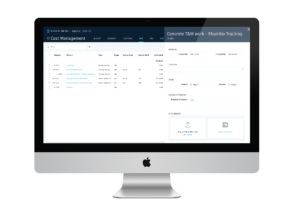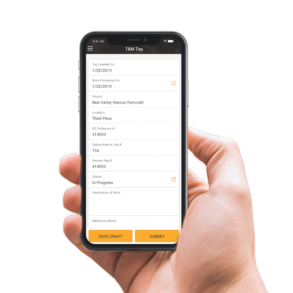
Technology solutions connecting the jobsite and the office are quickly becoming mainstays in the construction industry. The built world is charging into the future, and builders are adopting digital solutions on their projects at a massive rate. However, it is clear that the only way the industry will continue this positive trend is if the many solutions on the market communicate with one another. It helps nobody if data and information can’t be easily transferred among a project’s stakeholders, and if technology solutions are siloed.
Autodesk has taken this problem head on. The widely-used software developer offers customers a suite of solutions to connect the back office, trailer, and the field together. Many of its customers also used third-party solutions, so it has begun integrating these solutions into its products.
 So far, Autodesk’s BIM 360 platform features an integration program with 140 partners and over 80 completed integrations. In May, Rhumbix, a mobile solution that tackles time and material tracking on construction sites, became the latest addition to BIM 360’s growing integration program.
So far, Autodesk’s BIM 360 platform features an integration program with 140 partners and over 80 completed integrations. In May, Rhumbix, a mobile solution that tackles time and material tracking on construction sites, became the latest addition to BIM 360’s growing integration program.
“We give people access to data immediately,” said Caspar Yen, Rhumbix’s Vice President of Growth. “We get data to all stakeholders—subcontractors, project managers, and foreman. This allows everyone to do a more thorough job because they’re getting data in real-time.”
Immediacy is crucial to this integration, as it allows Autodesk users to leverage Rhumbix’s T&M Tracking solution to manage field change orders and potential change orders (PCOs). No building is actually constructed in a vacuum, and unexpected work crops up. Things change fast in the field, meaning builders need to adapt.
Mistakes are often made during the construction process. It is inevitable. Projects are complicated undertakings with countless moving parts. Sometimes, a laborer will install ductwork in the wrong location or incorrectly. But if that happens, builders can’t just pack up and go home. The show must go on, and the ductwork needs to be installed correctly and in the correct location. But keeping track of this unscheduled work can be confusing and time-consuming. You need to account for labor and materials and make sure that all stakeholders are up-to-speed with any changes and PCOs. This integration does just that.
Now, contractors using BIM 360 construction management platform can attribute costs—in dollars or hours—to certain PCOs and mark them as active or inactive. Users also now have the ability to determine what suppliers and subcontractors can bill against for any unplanned work.
“This really helps our customers,” said Yen. “You can now control the whole PCO or unplanned work process in one cohesive system.”
 General contractors can view all progress happening on a PCO ticket, including all the work and costs. Where, before, PCOs were a logistical nightmare, now the process of keeping track of any new work is more streamlined among stakeholders.
General contractors can view all progress happening on a PCO ticket, including all the work and costs. Where, before, PCOs were a logistical nightmare, now the process of keeping track of any new work is more streamlined among stakeholders.
“Because we’re working with both the supplier and general contractors, this data is shared quickly with all the different stakeholders,” said Yen. “Ensuring data accuracy and transparency is very important because subs and suppliers can only create tickets against work that has been approved by the general contractor.”
This integration is particularly exciting because of the assistance it provides the software giant’s user base.
“At Autodesk, we often talk about data as the new dollar and the opportunity to bring all of a project's data into one location makes the data truly valuable," said Josh Cheney, Autodesk’s Industry Manager of Construction Technology. "This allows for data accuracy, consistency, and real-time sharing, but as we continue to apply our machine learning-based tools to project data, our customers can reduce risk to the project and those working in the field. That's value.
Cheney, in particular, is looking forward to more opportunities to further integrations between Autodesk and Rhumbix.
“As we roll out more features in BIM 360, and as Rhumbix does the same, there will be more opportunities to connect our platforms and streamline data-sharing and project workflows,” he said.
This article was brought to you by Autodesk.



Discussion
Be the first to leave a comment.
You must be a member of the BuiltWorlds community to join the discussion.